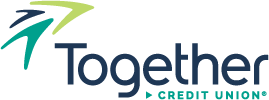Saint Louis, MO – It’s America Saves Week, a time to motivate, encourage, and support individuals and families to achieve their financial goals by sharing ways to save money, reduce debt, and build wealth. As the COVID-19 health crisis continues to impact our community, creating an emergency fund has become a critical strategy to protecting long-term financial planning goals.
A recent national survey found nearly 40% of the Americans surveyed wouldn’t have the cash to pay for an unexpected $1,000 expense, such as a car repair or medical bill. Of the survey’s participants,
- 8% would take out a personal loan
- 12% would borrow from family or friends
- 18% would charge to a credit card and pay over time
- 18% would pay it but cut spending on other expenses (food/gas/etc.)
- 39% would pull from savings
Why is an emergency fund necessary?
An emergency fund prevents disruption to your personal long-term financial goals by avoiding using your personal savings account, which should be primarily used for long-term financial planning goals, like retirement.
An emergency fund also prevents you from accumulating additional debt from interest rates. According to the survey, 18% of the respondents surveyed would assume credit card debt. However, the average interest rate on credit cards is above 16%. As a result, changes can add hundreds of dollars to the emergency expense.
How much should you save in your emergency savings account?
Ideally, you will want to have 3-6 months of expenses tucked away in your emergency savings. However, this goal can seem unachievable if you are looking at the total amount. Instead, start with a smaller goal.
With nearly 40% of American’s unable to afford an unexpected $1,000 expense, establishing this monetary goal is a reasonable and achievable first step.
Where should you keep your emergency funds?
Emergency funds are best placed in an interest-earning bank account, such as a money market or interest-earning savings account, that can be accessed easily without taxes or penalties.
Try to avoid tying up your money in any long-term investment funds. You will want to have quick access to your money in the event of an emergency, and long-term investment funds make it more difficult to access your money quickly.
How do you build an emergency fund?
- Establish a budget. We offer a free online training module to learn strategies, tips, and tools to help achieve your financial goals.
- Track your spending. Together Credit Union offers Money Management, a budgeting tool accessible through our mobile banking app and online banking platform.
- Pay yourself first! This is a budget strategy focused on achieving your savings goals by utilizing a modified Spend, Save, and Share financial model. This model allocates 50% for necessities and/or expenses, 30% for debt repayments or wants, and 20% for savings.
- Have a Plan for Bonus Money. Use the “pay yourself first” modified spend, save, and share financial model to allocate tax refunds and stimulus checks to cash influxes from holidays, birthdays, or work bonuses wisely.
For more information on Together Credit Union’s free financial literacy training modules, please visit here. To learn more about products and services, ask us here, call 800-325-9905, or email [email protected].
About the Credit Union: For more than 80 years, Together Credit Union has served as a trusted financial partner, empowering more than 136,000 Members nationwide to achieve their goals. As a result, the Credit Union is named a 2019 and a 2020 Best Credit Union in State for Missouri by Forbes Magazine and was chosen as a 2019 Corporate Philanthropy honoree by both the Credit Union National Association and the St. Louis Business Journal.
As a member-owned, community-focused, not-for-profit financial institution, the Credit Union offers comprehensive banking products and financial services at 27 branches nationwide and through 24/7 Member resources and amenities. In addition, Members can access their accounts and perform transactions at more than 5,600 shared branch locations and self-service shared branch express terminals, as well as more than 25,000 surcharge-free ATMs, through the CO-OP Shared Branch Network in all 50 states.
With more than $2 billion in total assets, the Credit Union is federally-insured by the National Credit Union Administration (NCUA), and named a 2019 and a 2020 Best Credit Union in State for Missouri by Forbes Magazine.

 Online Access Login
Online Access Login Apply for Loan
Apply for Loan
 Open an Account
Open an Account Make A Payment
Make A Payment

 AD&D Insurance
AD&D Insurance






 HowDoYouCU? Follow our blog!
HowDoYouCU? Follow our blog!




